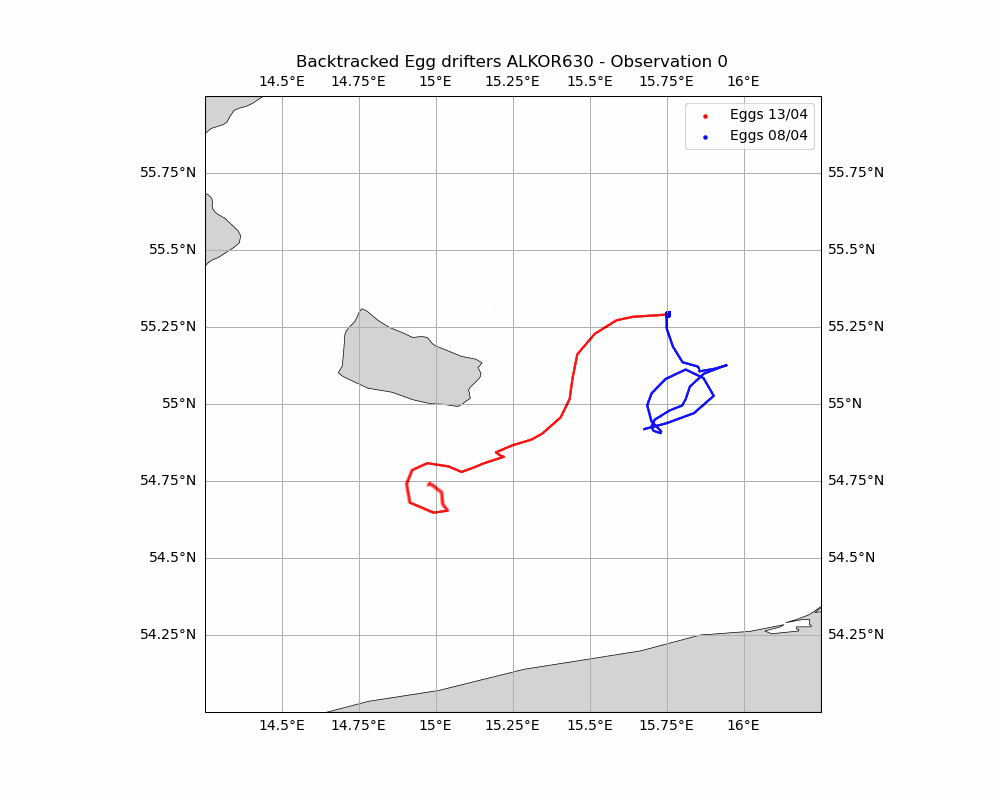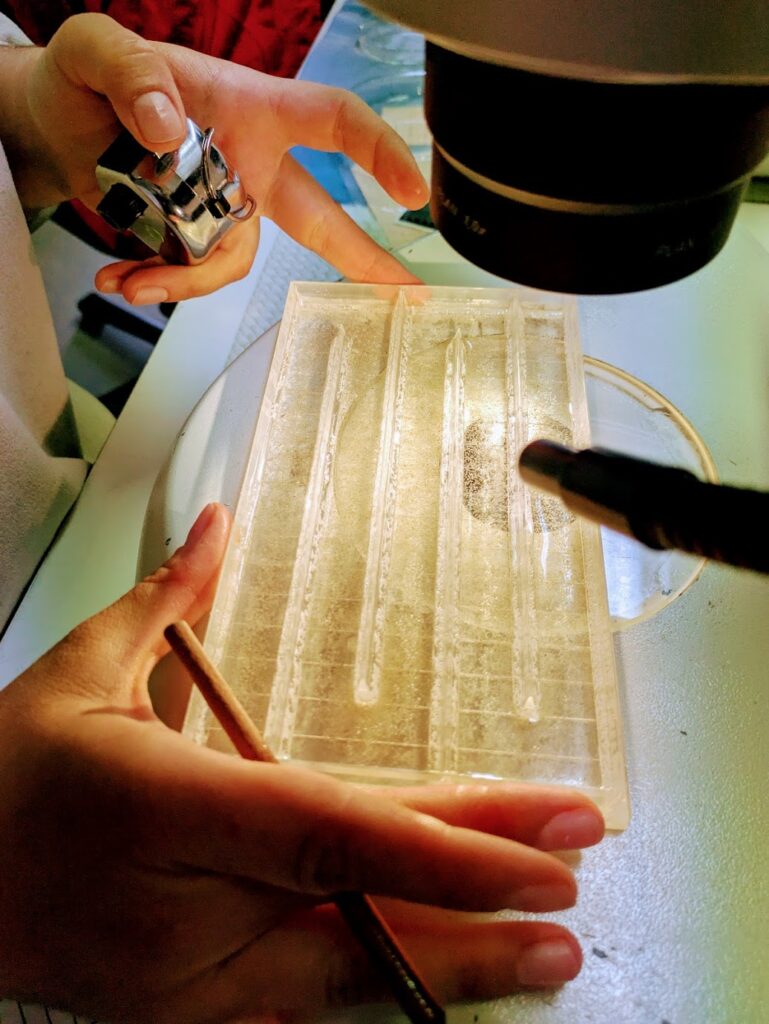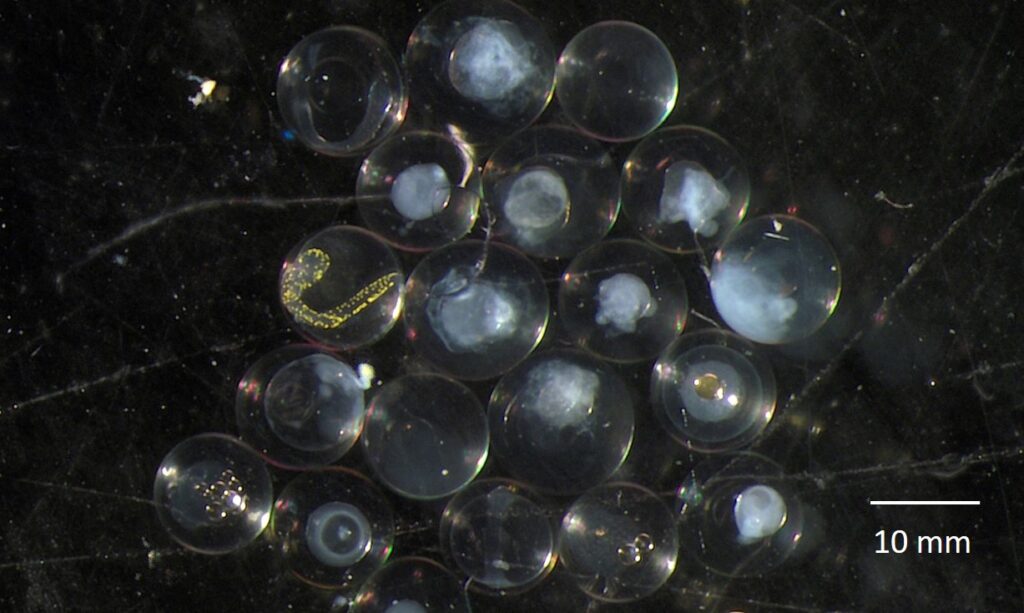Hello blog readers,
It’s another exciting day aboard the ALKOR630 cruise! The sun is rising, and the bongo nets and water samplers are ready to go. Greetings from Station BB23—one of the most sampled and ecologically important hotspots for phytoplankton, copepods, and fish eggs/larvae.
Today, we’re exploring a technique called Lagrangian particle tracking (LPT)—a powerful method for tracing the path of a water parcel in the ocean as it moves with currents, winds, and density-driven flows (including subsurface layers). This approach solves the advection equations using Runge-Kutta schemes to model the Lagrangian (non-fixed) motion of a fluid parcel.
This technique has been used in oceanography since the 1980s to track the movement of water parcels or passive particles – in this case, fish eggs. Since eggs and larvae are passive drifters, LPT has become a key tool for analyzing connectivity between spawning and nursery grounds of many important fish species.
Through the years the LPT has helped to reveal the Baltic’s hidden connections – from cod eggs connectivity (Hinrichsen et al., 2016), to sediments dynamics (Corell & Döos., 2013), water masses residence analysis (Dippner et al., 2019), and even microplastics pathways! (Siht et al., 2025).
Now let’s get hands-on with our data and see where the eggs and larvae we caught in our bongo nets at Station BB23 on day four and day 10 of the cruise might have come from!

As you can see in the animated trajectory, these eggs originated from different locations across the Baltic. Using a Baltic Sea physical model with LPT on top, we’ve traced the eggs/larvae back 30 days in time! This method reveals their origins and helps identify potential spawning areas. The most remarkable finding? Eggs collected just five days apart (April 8th, blue line; April 13th, red line) originated from locations nearly 1° apart – quite a journey for these tiny drifters! This is the Baltic Sea’s connectivity in action!—through currents that carry life across its waters. In just 30 days, tiny eggs travel distances that reshape their fate. By tracing their paths, we uncover the Baltic’s silent role in sustaining ecosystems, proving how even the smallest journeys can shape the sea’s future.
Greetings from Bornholm Basin, Daniel Lizarbe (scientific crew member AL630)

Bongo net going out. 
Plankton sorting on board. 
Shift work sorting samples.
References
Hinrichsen, H. H., Lehmann, A., Petereit, C., Nissling, A., Ustups, D., Bergström, U., & Hüssy, K. (2016). Spawning areas of eastern Baltic cod revisited: Using hydrodynamic modelling to reveal spawning habitat suitability, egg survival probability, and connectivity patterns. Progress in Oceanography, 143, 13-25.
Petereit, C., Hinrichsen, H. H., Franke, A., & Köster, F. W. (2014). Floating along buoyancy levels: Dispersal and survival of western Baltic fish eggs. Progress in Oceanography, 122, 131-152.
Dippner, J. W., Bartl, I., Chrysagi, E., Holtermann, P., Kremp, A., Thoms, F., & Voss, M. (2019). Lagrangian residence time in the Bay of Gdańsk, Baltic Sea. Frontiers in Marine Science, 6, 725
Siht, E., Väli, G., Liblik, T., Mishra, A., Buhhalko, N., & Lips, U. (2025). Modeling the pathways of microplastics in the Gulf of Finland, Baltic Sea–sensitivity of parametrizations. Ocean Dynamics, 75(1), 9.
Corell, H., & Döös, K. (2013). Difference in particle transport between two coastal areas in the Baltic Sea investigated with high-resolution trajectory modeling. Ambio, 42, 455-463.
